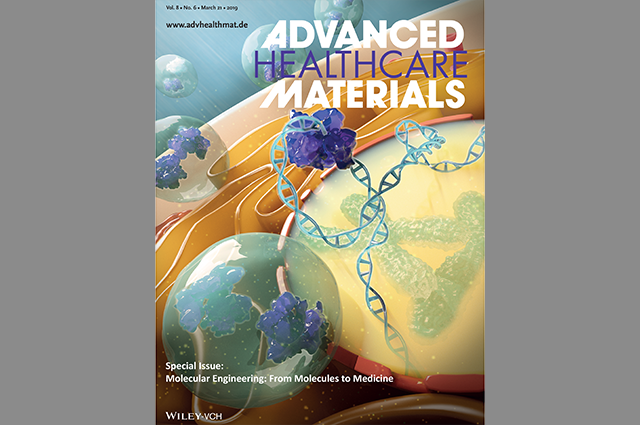Novel protein delivery method

By Joel Lima, E21
In a paper published in Advanced Healthcare Materials, Associate Professor Qiaobing Xu, postdoctoral scholar Yamin Li, and Alice Chukun Li, an undergraduate student at Tufts who studied in the Xu Lab, synthesized three types of lipidoids with differing tail structures and analyzed their ability to deliver genome editing and His-tagged proteins. A His-tag is a chain of amino acids, normally six histidines, that are added to a protein so it can be more easily identified, separated and/or bound to.
Proteins play a key role in maintaining life at both a structural and functional standpoint. Serious conditions that result from malfunctioning or missing proteins are usually treated by delivering functioning proteins to specific sites. Protein therapeutics that show high tolerance, high specificity, low genetic risks, and low “off-target” effects have been a source of growing attention since the late twentieth century.
While existing therapeutic methods like microinjection are straightforward and efficient, their invasive nature can lead to complications. By contrast, Xu’s team believes that an intracellular delivery approach could expand protein-based modalities. The team developed nitrilotriacetic acid (NTA) containing lipid-like (lipidoid) nanoparticles that are capable of delivering various proteins. “Compared to physical methods like microinjection and electroporation, the biochemical delivery methods that we have been using, like the lipidoid nanoparticles-based delivery strategy, are non-invasive and more versatile,” says Xu.
The research team utilized three different cell types (HeLa, DsRed-HeLa, and HEK) to test the efficiency of their nanoparticles to transfer proteins. Using internalization studies to determine the nanoparticle’s efficiency, the researchers found that the newly developed particles are able to effectively transfer both His-tagged and genome editing proteins into the cell. Further testing showed that the developed nanoparticles showed biocompatibility and low cell toxicity.
Xu, who combines his research interests in nanofabrication and drug delivery through investigating the use of nanoparticles for intracellular delivery applications, plans to continue researching the nanoparticles that showed the lowest toxicity and higher protein transferring efficiencies, and to work towards gene-editing applications.
Read more about this research from the Department of Biomedical Engineering, in Advanced Healthcare Materials.
Department:
Biomedical Engineering